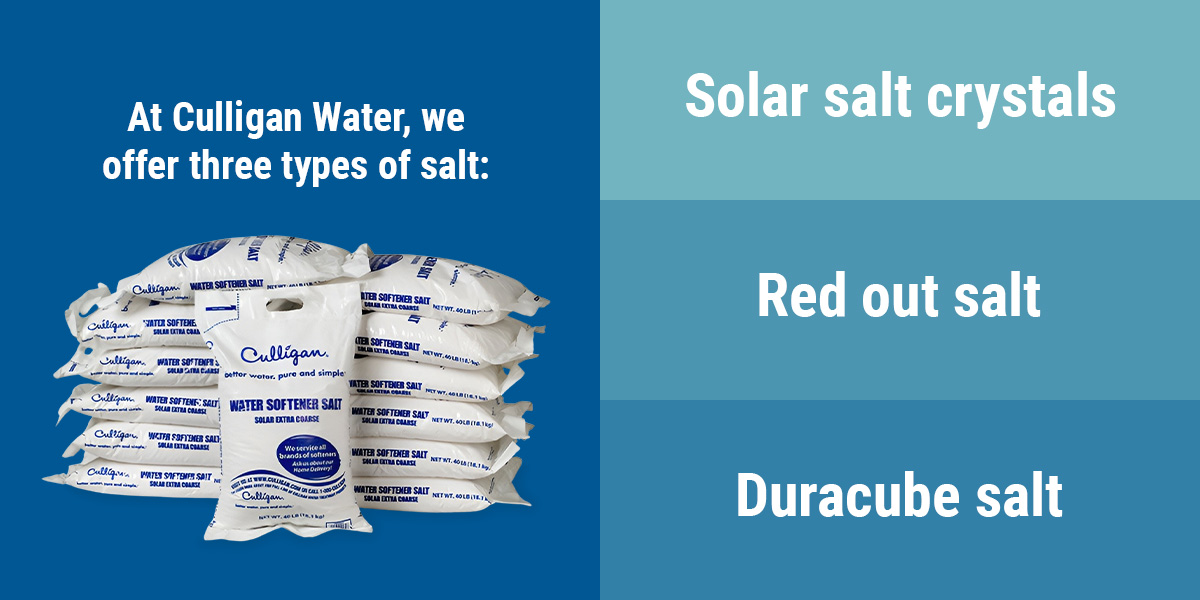You know you need to add salt to your water softener to keep it working properly — but do you know why? Water softeners play a vital role in reducing the effects of hard water, such as damage to appliances, by removing certain minerals from it. This removal process is known as ion exchange, and it requires salt to reduce the mineral content.
What Does the Salt Do in a Water Softener?
It’s natural to want to know what salt does in a water softener since you use it to treat your home’s water supply. You may be concerned about the effects of this salt on your health. However, you have nothing to worry about — water softeners don’t make your home’s water salty.
The chemical makeup of salt is sodium chloride. Water softeners rely on the sodium content in salt to break down the calcium and magnesium in hard water through a process called ion exchange. It’s a far simpler and more effective method than physical filtration, especially when softening large amounts of water.
How Does the Ion Exchange Process Work?
The ion exchange process uses two tanks. One tank houses beads of resin, a positively charged medium that attracts negatively charged calcium and magnesium in hard water. The other tank contains the water softener salt and the negatively charged sodium ions that make it up.
During the water softener’s regeneration cycle, the salt solution runs over the resin beads. The sodium ions bond to the positively charged resin beads, replacing the calcium and magnesium ions. These hard water minerals are then flushed from your water system.
What Happens to the Sodium Ions?
As you use your water, the sodium ions are exchanged off the resin beads as the hardness ions are removed. The amount of sodium in the softened water is very minimal and it is directly proportional the amount of hardness being removed. For example, if your untreated water contains 10 grains of hardness, one quart of the softened water will contain approximately 75 milligrams of sodium. By comparison, a typical slice of white bread contains approximately 170 milligrams of sodium.
When Should You Add Salt to Your Softener?
For the water softener to work, you need to replenish the salt regularly. The ideal frequency depends on several factors, such as the hardness of your water, the age of your water softener equipment, your home’s water consumption and the size of your water softener tank.
Some water softener systems require a refill every few weeks, while others can last a few months or even up to a year. Some may have an indicator to inform you of your salt level. If yours doesn’t, you can simply look in the salt storage container to see how full it is. Typically, if the salt level is below half full or if you start to see water above the salt level, it is time to add salt.
What Kind of Salt Should I Add to My Softener?

Specialized salts are best for water softeners, and the ideal type for yours depends on your specific water conditions or needs. At Culligan Water, we offer three types of salt:
- Solar salt crystals
- Red out salt
- Duracube salt
It’s best to consult the professionals at Culligan Water for a water softener solution tailored to your home or business. You can contact us online for more information on adding salt to your water softener.
